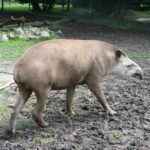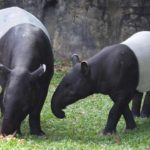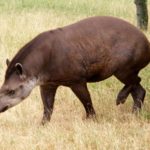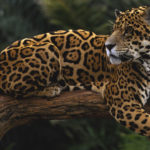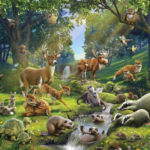Tapirs – information
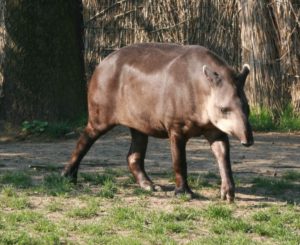 Tapirs are ideally adapted to life in warm and humid forests. They pick up the fallen fruits from the ground and tweak the fern and young shoots. The fat body of the tapir easily passes through the underbrush, and in the water this beast feels as comfortable as it is on land. And yet the key to the tremendous success of the tapirs was and remains their most distinctive feature – a short but unusually mobile trunk, an indispensable accessory if you live in the forest.
Tapirs are ideally adapted to life in warm and humid forests. They pick up the fallen fruits from the ground and tweak the fern and young shoots. The fat body of the tapir easily passes through the underbrush, and in the water this beast feels as comfortable as it is on land. And yet the key to the tremendous success of the tapirs was and remains their most distinctive feature – a short but unusually mobile trunk, an indispensable accessory if you live in the forest.
They can reach the fodder, it’s also a tube for underwater walking, and a continuous olfactory signal reader about the presence of food or the opportunity to have sex. But the climate on Earth changed: the cooler and drier weather led to the displacement of forests by meadows, which are perfectly suited to herbivorous ruminants, but not short-sighted, semi-aquatic fruit lovers.
Tapirs – unlike their closest relatives, rhinoceroses and horses – have not coped with this transition, and all four modern types of tapirs today are on the verge of extinction. Now the main threat for tapirs is a person.
Hundreds each year become victims of poachers – for the sake of fatty meat (which is often sold under the guise of a buffalo), strong, wear-resistant skin (tapira in the language of Brazilian Indians means “fat”) and other parts of the anatomy still used as a folk remedy for epilepsy and heart disease. In many American Indian tribes, the Milky Way is known as the “Tapir’s Trail” – just as the Indians of the North American prairies call it the “Buffalo Path”.

